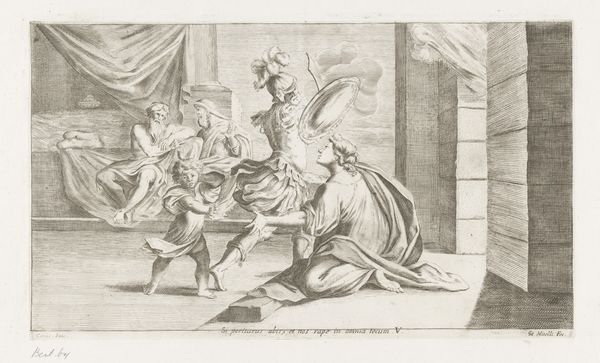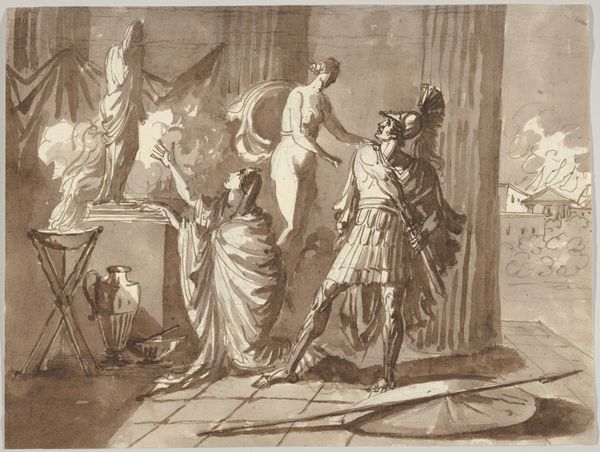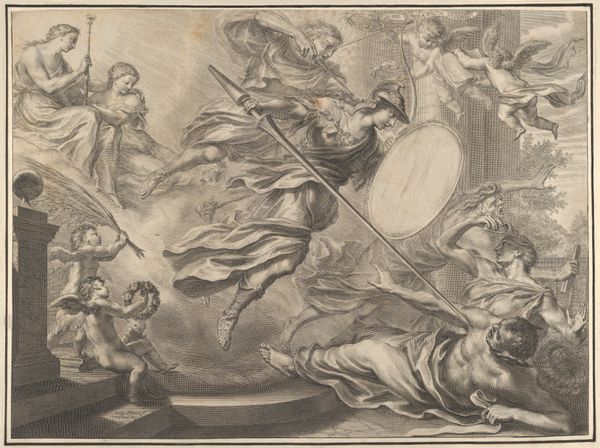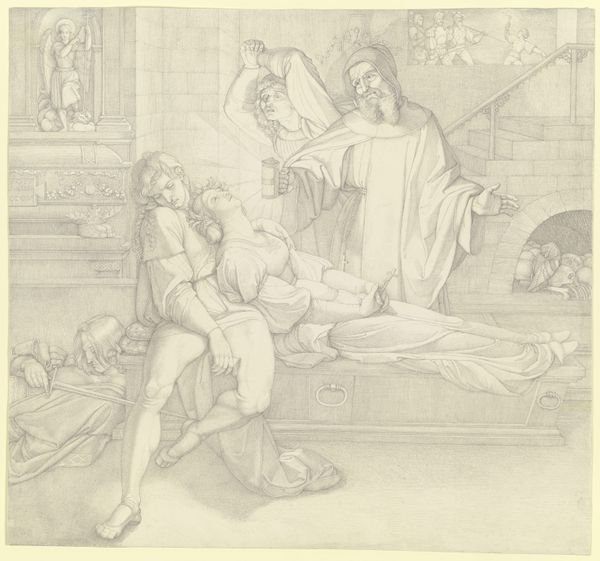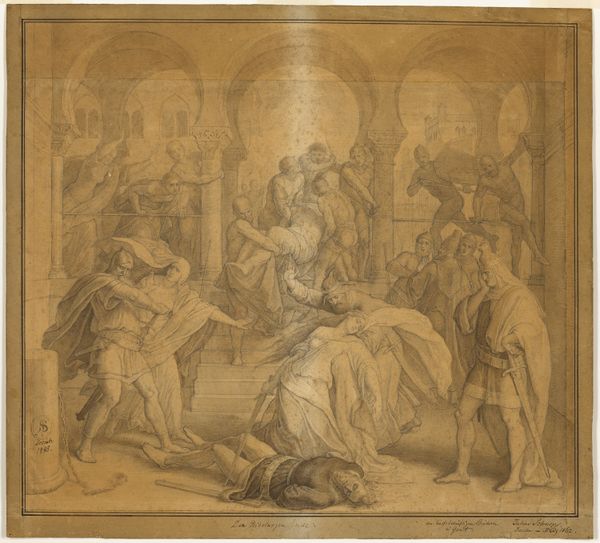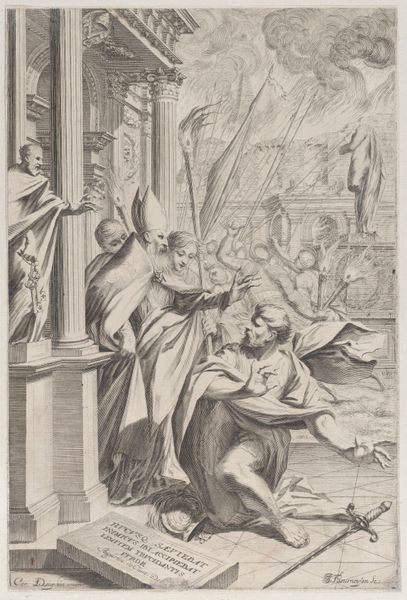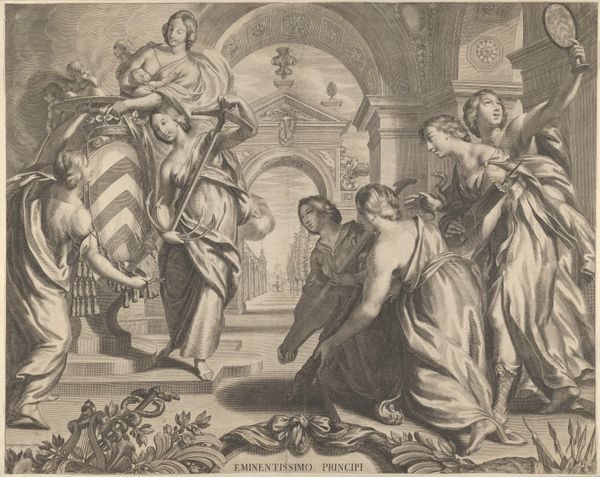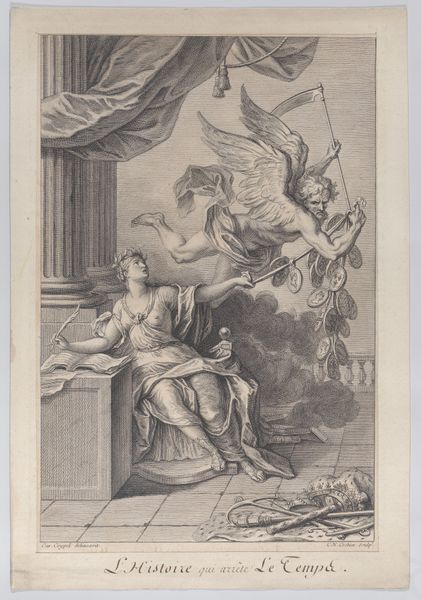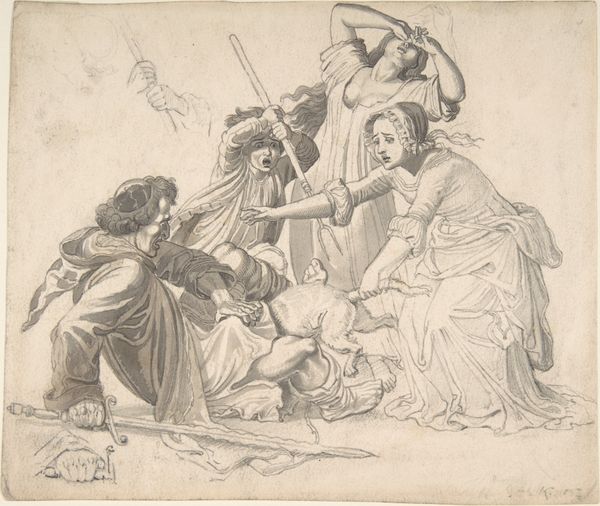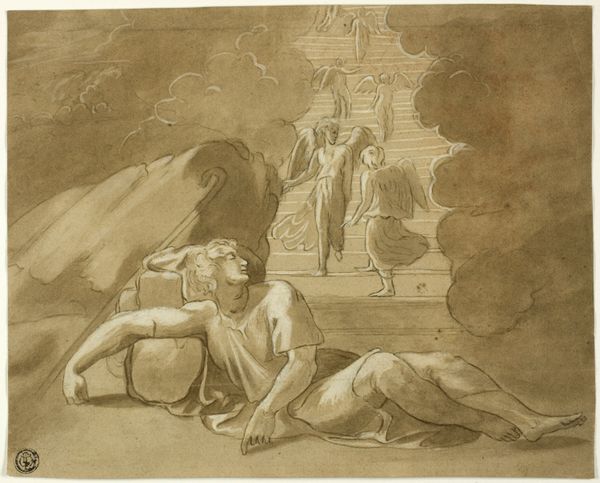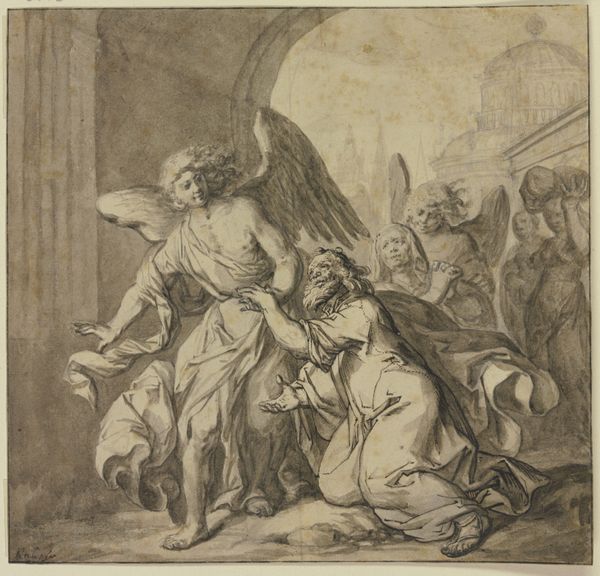
drawing, print, paper, pencil
#
drawing
#
narrative-art
# print
#
figuration
#
paper
#
romanticism
#
pencil
#
history-painting
Dimensions: sheet: 16 3/8 x 21 1/4 in. (41.6 x 54 cm)
Copyright: Public Domain
Editor: So, this is Adam Vogler’s "Hamlet and the Ghost of his Father," made sometime between 1842 and 1852. It’s a pencil drawing, a print on paper, and I immediately get a sense of unease from it. What compositional elements stand out to you? Curator: Immediately, it's the stark contrast. Note how the artist employs very light pencil strokes to delineate the spectral form against a barely-there, darker backdrop. The ghost is thus articulated through minimal tonal differentiation, highlighting its ethereal nature via lack of substantial form. It presents itself in relationship to the figures in motion. Do you see it too? Editor: I think so, it seems like everyone is moving and that Hamlet's being pushed forward, or restrained, depending on how you read it. Curator: Observe how the linear perspective guides your gaze, pulling you from the figures on the left towards the specter on the right. But consider how the receding space seems flattened. Are we drawn *into* the scene or is our gaze held at the surface by the shallow depth? Editor: It feels very flat, as though the artist wants me to see everything at once, but can’t quite create true depth. It almost seems theatrical. Curator: Precisely! Note also how the artist strategically positions each figure within a structured visual framework. Each character’s gesture is distinct, yet linked, to another, culminating in a sequence that orchestrates our reading of the image. Vogler focuses more on the relations among the different parts, and less on background or extraneous details. What might it suggest about his intention in depicting the narrative? Editor: Perhaps, by focusing on the key gestures and their connections, he’s trying to emphasize the psychological impact of the scene. Curator: An excellent observation. The artwork invites close scrutiny of form and the calculated arrangement of shapes, lines, and tones—everything contributing to the narrative's stark portrayal. Editor: I didn’t initially consider how much the composition itself could highlight the emotional impact. Thanks for pointing that out.
Comments
No comments
Be the first to comment and join the conversation on the ultimate creative platform.
